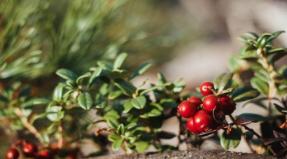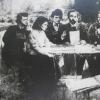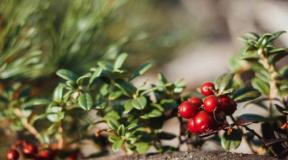How much weight can shell rock support? What is better - shell rock or foam block? Two completely different materials. Composition and main characteristics of the material
Three main brands:
- M15 (15 kgf/cm2)- brand of shell rock (shell rock). It has a relatively low density and high porosity. The characteristic color is light yellow. Used for the construction of fences and buildings no more than one floor in height. The weight of the stone is 13-14 kg.
- M25 (25 kgf/cm2)- a brand of shell rock (shell rock) with a relatively average density and less porosity in comparison with M15. The characteristic color is light yellow. Most common in construction. Mainly used for the construction of houses of one, two and more floors. The weight of the stone is 17-20kg.
- M35 (35 kgf/cm2)- (Meotis, Kolpak) brand of shell rock (shell rock) having highest density and low porosity in comparison with grades M15 and M25. The characteristic color is yellow-white. It is used in construction when laying foundations, basements, and building cellars.
Shell rock strength grades
Price of shell rock grades M-15, M-25, M-35 in your city
Limestone. Geological structure.
Limestone (shell rock)- one of the most widespread sedimentary rocks organic origin, consisting mainly of calcium carbonate. Deposits are found among sediments of all geological systems. The thickness of the limestones varies: from a few centimeters to 5 km. Limestone in some cases includes admixtures of clay minerals, dolomite, quartz and organic residues, which determine the name of limestone. Limestones are nummulitic, bryozoan, shell rock and marble-like - massively layered and thin-layered.
The structure of limestone is:
- crystalline (coarse-, fine- and cryptocrystalline). This limestone is massive and dense, slightly porous;
- organogenic-clastic (reef, shell rock, chalk). It is characterized by large porosity, low volumetric mass and is easy to saw and sand;
- clastic-crystalline limestone composed of carbonate detritus different shapes and size. They are characterized by small pores of different shapes, variable volumetric mass, low strength and high water absorption;
- sinter (travertine, calcareous tuff). It is characterized by low volumetric mass, highly porous, easy to process and saw.
According to the macrotexture and conditions of occurrence of limestones, they are distinguished: lumpy, massive, reef, spotted, horizontal and obliquely layered, cavernous, thick and thin slabbed, etc.
In terms of their physical and mechanical properties, limestones are heterogeneous and have a direct dependence on structure and texture. Frost resistance for crystalline limestones is quite high, but changes sharply for limestones of a different structure. When wet, the strength of limestones often decreases. As a rule, as the volumetric mass of limestone decreases, wear, abrasion and crushability increase. Shell rock and porous limestone are easy to saw and trim; crystalline limestones are well polished. Limestones are predominantly white, yellowish or light gray in color, and the dark gray, black, reddish or greenish color is caused by the presence of various impurities in them.
By origin they are distinguished:
- clastic limestones are formed in the process of fragmentation, washout and redeposition of angular-rounded fragments of carbonate and other rocks in marine basins and on the coasts;
- organogenic (biogenic) limestones, which are an accumulation of carbonate remains or entire skeletal forms of marine organisms, with a small admixture of carbonate cement;
- chemogenic limestones arise as a result of the precipitation of lime with the recrystallization of carbonate mass of sediments from sea water (crystalline limestone) or from deposits from mineralized sources (travertine);
- mixed limestones - a complex of deposits that arose during the process of sequential or parallel formation of carbonate sediments.
Comparison of shell rock with other building materials
| Material | Brand (strength) | Block size (cm); | *Coeff. heat-conducting (kcal.m.hour.oC) | **Frost resistance (cycles) | Water absorption | Wall pieces (blocks) per 1m2 with a thickness of 40cm | Number of pieces in 1 m3 |
|---|---|---|---|---|---|---|---|
| Crimean shellweed | M25 (25kg/cm2) | 38x18x18 | 0,2-0,35 | 50-70 | 15 | 25 | 72 |
| Brick (ceramic) | M100 (100kg/cm2) | 25x12x65 | 0,55-0,7 | 20-30 | 15 | 180 | 512 |
| Hollow brick | M100 (100 kg/cm2) | 25x12x65 | 0,4-0,5 | 20-50 | 15 | 180 | 512 |
| Silicate brick | M150 (150kg/cm2) | 25x12x65 | 0,55-0,95 | 15-20 | 30 | 180 | 512 |
| Ceramic block(stone) | M100 (100kg/cm2) | 25x12x13.8 | 0,38-0,45 | 30-50 | 15 | 90 | 240 |
| Aerated concrete (gas silicate) | D500 (25kg/cm2) | 60x30x20 | 0,2-0,7 | 20-30 | 30 | 11 | 28 |
| Foam concrete | D500 (10kg/cm2) | 60x30x20 | 0,4-0,8 | 15-20 | 30 | 11 | 28 |
Shell rock and foam block
Analyzing which is better - shell rock or foam block, their general and individual qualities will be compared.

Comparison of shell rock and foam blocks with other materials
Since the foam block is an artificial material, its qualities completely depend on the manufacturer. All data taken for comparison assume that the foam blocks comply with the requirements of GOST 25192-82 and GOST 21520-89.
Main disadvantages and advantages
Shell rock or foam block, which is better? To answer you need to know the characteristics of each specific case, not forgetting to carefully study all the main parameters.
Advantages
Main advantages natural stone are its environmental friendliness and durability:
- Shell rock consists of the mineral remains of dead sea creatures and sedimentary rocks. Very rich in iodine - interior walls made from this material have a beneficial effect on the thyroid gland. Prevents diabetes.
- The layers from which the stones are cut were formed millions of years ago.
By the time it arrived at the construction site, the shell rock had survived every possible cataclysm in nature thousands of times. Its durability indicator is proven by nature.

These shell rock walls have withstood more than one siege.
The opportunity to leave the most original stones part of the design, gives in comparison “what better foam block or shellfish?”, a significant point for the shell.

But the foam block also has its advantages. Produced according to a prescription, it has clear characteristics that allow engineering calculations.

More accurate geometric dimensions make it much easier and faster.

Both materials have high noise and heat insulation characteristics.
Flaws
The main common disadvantage is low strength, but the foam block may still be at the production stage. In this case, its bending strength becomes several times higher.
When deciding - shell rock or foam block, which is better to choose for load-bearing walls, this factor plays a very important role.

The second problem is the high degree of moisture absorption. Voids that retain heat well are also well filled with liquid.

A high percentage of shell rock is still in the quarry
The foam block splits no worse than shell rock!
Important! The strength of one package of foam blocks is usually stable. To check, just try to break one. If it breaks with difficulty, the halves will be needed in the masonry. If it’s easy, it’s better to return the entire package to the seller.
This method is not applicable to shell rock, since the characteristics may differ within the same stone. For such a check, you need to break all the blocks.
Production technology
Foam blocks are made from a mixture of cement and sand, and shells are cut from layers along the shores of the southern seas. It is this difference that gives rise to factors influencing the choice: which is better, foam block or shell rock?
Rakushnyak
Available deposits of shell rock are found in places where the sea retreated from its boundaries thousands of years ago. The location of the quarries is on the coasts of the Black, Azov and Caspian seas.
Until the mid-20th century, stone was cut and hollowed out by hand. Impact loads led to frequent cracking of the blocks.

Nowadays sawing machines operate in the quarries, carefully cutting out products from the layers.
Foam block
The method for making foam blocks is very simple.
- Cement, sand, foaming agents and water are mixed in a special mixer with high blade speeds.
- The liquid mixture is poured into molds.
- After the solution hardens, the blocks mature for 4 weeks.
This availability of production leads to the appearance of frankly bad products on the market.

One person can easily complete the entire process
Advice! There is no need to buy products of unknown origin. The presence of certificates does not guarantee the integrity of the manufacturer. But at least it gives you a chance to buy foam blocks of normal quality.
Characteristics
In terms of technical indicators, in addition to ecology, the foam block is superior to shell.
Rakushnyak
Depending on the mining region, quarry, formation and many natural factors, the parameters of shell rock are a very relative concept. Such instability is a significant disadvantage when comparing which is better, foam block or shell rock.

Differences in density and strength of shell rock by place of origin
Standard cut blocks have dimensions of 380/180/180. Unfortunately, these dimensions are kept within the range of 20-30 mm.

- The substance of the blocks, hardened over thousands of years, does not react with other materials.
- Deep pores are the basis for the setting of the plaster mortar.

Shell rock is divided according to strength grades.
- M15- used only as insulation.
- M25- construction of one-story buildings is possible.
- M35- allows the construction of load-bearing walls up to 3-4 floors high.

Dimensions and weight of shell rock by brand

Externally, stones various brands can be distinguished by the number of pores and color - the fewer cavities and the whiter, the stronger the block. At the same time, there are durable blocks with large pores. Nature does not like to comply with standards.
Foam block
Produced artificially, it has a wider range of characteristics:
- The strength of a foam block can significantly exceed shell rock. However, the thermal insulation will become worse and the weight of the block will increase.

Characteristics of foam blocks
- All parameters of the selected brand of foam concrete are stable for each block.

Blocks of the same party are like twins
- Foam blocks have wide choose by size.

Dimensions of foam concrete blocks
From the point of view of convenience and speed of work, as well as the accuracy of preliminary calculations, foam blocks clearly win.
Application
The advantage of the shell is the ability to use leftovers for design purposes.
Rakushnyak
The main purpose is construction; the originality of each stone provides many additional possibilities.

The blocks are easy to cut into decorative tiles or other parts for interior and exterior work.

Create an exclusive landscape with your own hands.

Shellweed in the landscape Advice! Structures made of shell rock are not load-bearing and can be laid on an environmentally friendly clay mortar. The amount of water depends on the parameters of the clay.
Foam block
These blocks are used to build internal partitions and external load-bearing walls.

Shell rock has a wider range of applications. But it is more difficult to build from it, so the price of the work will be higher and the construction period will increase. By watching the video in this article you can learn more interesting facts.
Video about shellfish:
Video about foam blocks:
Price
Since foam block can be produced in any region, its cost is stable and depends on the brand of density.
In mining areas, shell rock is one of the cheapest building materials. As you move away from the quarry, its price increases. This feature can be decisive in comparison - shell rock or foam block, which is better to choose for your home.
How many blocks of stone can there be in a cube?
- Taking into account a standard block with a material size of 38x18x18 cm, there are 72 stones in one cubic meter.
Which material will be better, with or without pores?
- Porosity is the main property of shell rock. Thus, the material is heat-conducting and sound-absorbing.
What is the load-bearing capacity of the walls in shell rock?
- Shell rock M25 can withstand a load of 25 kg/cm2; The shell rock block has a standard size of 38x18x18cm; The maximum weight of one shell rock is 17 kg; The area of the loaded surface is 38x18 cm; The maximum possible load is 18t; For houses that have more than 4 floors - 3.4 meters; Number of blocks in height - 18 pcs; The weight of the shell rock on one floor is 305 kg; Block weight for height - 905 kg; Then you need to add 5 to the weight reinforced concrete slabs for this shell rock, and we get 6 thousand kg. As a result, after all the calculations we get approximately 7 tons.
How to determine the density of shell rock?
- It is necessary to hit the shell rock on a hard surface, and if the material splits into 3 or more parts, then it belongs to the M25 brand. If a lot of sand remains after the impact, then the density of the material is much lower. But a stone has a density of 15 if it has broken up into many parts. If the stone does not break, then it is grade 35.
How much shell rock is needed for square meter walls?
- If the wall is laid in stone, then 30 blocks will be needed, and if laid on the floor of stone, then 18 blocks.
How can I place an order?
- You need to contact our manager by phone and agree where your order will be delivered.
What determines the cost of shell rock?
- It depends on the quality of the stone, its parameters, as well as the cost of delivery. And our company strives to provide good quality products with at the lowest cost for client.
Is your company a manufacturer or does it resell?
- The company is the owner of the quarries and mines shell rock, so you can purchase shell rock from our company without overpayments. And despite the fact that you can find many advertisements “I will sell shell rock” or “shell rock Crimea”, you can purchase the stone directly from our company.
Is it possible to buy shell rock directly from the quarry?
- Yes, you can buy shell rock from a quarry, and the company will ship the stone by rail or to your car. Shell rock can be purchased immediately with delivery to the construction site. To do this, you need to contact the manager.
If you buy a stone from a quarry, how will you pay for the purchase?
- You can pay for your purchase either in cash or by bank transfer.
Why does the cost of shell rock change all the time?
- The cost of shell rock depends on various factors. Stone is mined using machines that operate on diesel fuel. Consequently, the cost of shell rock is tied to the cost of fuel. Therefore, when the price of diesel rises, the price of shell rock also rises. Of course, these factors also affect the shipping price. However, you can purchase shell rock from us at any time of the year at a competitive price.
Shell rock, shell rock are the names of sedimentary rock, a type of limestone formed from the organic remains of marine living organisms, mainly from shells and their fragments. The main component of shell rock is calcium carbonate.
The main deposits of shell rock are located in places of prehistoric seas. As the waters receded over time, the remains of sea creatures that had accumulated on the seabed for millions of years were exposed. Under the influence of natural conditions, the skeletons of prehistoric sea creatures were compressed to the hardness of stone.
Characteristics of shell rock
Shell rock is a type of limestone, mainly consisting of calcium salts. Its chemical composition, regardless of the deposit, is almost the same.
| Types of stone by color | Chemical composition (%) | Density (g/cm3) | Specific gravity (kg/m3) | ||
| CaCO3 | MgCO3 | Insoluble residue | |||
| Yellow and yellowish gray | 90-95 | 3-8 | 2 | 0,8-2,3 | 800-2300 |
| Yellowish-gray with green tint, slightly marly | 84-85 | 5-6 | 10 | ||
| Yellowish-gray, slightly sandy | 85-90 | 3-5 | 5-6 | ||
The popularity of shell rock as a building material is due to its strength and attractive structure. Depending on the porosity, there are three types of stone:
- Grade M15 is a stone of high porosity and, as a result, low strength. Its color is light yellow. Sand impurities in large quantities, having high thermal conductivity, make the stone “cold”. Stone blocks of this brand are extremely fragile and light, but they are successfully used for the construction of low one-story buildings (garages, sheds, bathhouses, fences, etc.).
- Grade M25 is a stone of greater strength and less porosity. Most common in construction practice brand. Color - light yellow. The strength indicators of M25 are greater than those of brick, gas or foam concrete.
- M35 is the brand of shell rock with the highest density. Low porosity provides high specific shell weight And high strength. The yellow-white color of the stone, dense structure and low water absorption make it an excellent material for external cladding buildings, giving them a unique flavor. It is also used in the construction of multi-story buildings when laying foundations and constructing cellars. The density is close to concrete.
Extraction and application
Shell rock is one of the few building materials that nature has given us practically in finished form. Stone extraction involves cutting geological layers with special machines into blocks of a certain size. The appearance of the stone, even within the same deposit, can vary significantly. The stone is easy to saw and process. Depending on the further purpose, the surface of the stone will be simply sawn, polished or slightly rough.
Advantages of the material:
- relatively small shell stone weight,
- low cost,
- unique texture,
- simple processing and installation,
- excellent adhesion due to the porous structure,
- low thermal conductivity,
- good sound insulation and frost resistance (with correct installation and operation without loss of quality can withstand more than 100 seasons),
- does not enter into chemical reactions with other building materials.
Shell rock is widely used in low-rise construction, interior and exterior decoration. Looks great in landscape projects on personal plots(fences, retaining walls, grottos, fountains, etc.). Polished shell rock tiles impregnated with hydrophobic solutions are used as decorative finishing.
When you see a house decorated with natural stone, you get the involuntary impression that its owner good taste. Due to the growing demand for country houses, the most common and inexpensive material Shell rock is used for the construction and decoration of facades. Buildings made from it look solid, three-dimensional, “my home is my fortress.”
Origin of shell rock
The main deposits of this natural stone are located in the southern regions, where prehistoric seas used to overflow: Moldova, Odessa region, Crimea, most of the Alps, Turkmenistan, Azerbaijan. As the name suggests, this building material consists of shells and shells from marine animals that lived in these seas. Over time, the seas dried up, the shores and bottom were exposed along with the remains of these sea creatures that settled in them. Even now, skeletons of these prehistoric animals can be found on sections of shell rock slabs. Under influence natural conditions and the weight of years has compressed all this to the hardness of stone.
Composition and main characteristics of the material
Shell rock is limestone consisting of calcium salts. Moreover, regardless of the place of extraction, the composition remains approximately the same: calcium carbonate - 52.06-55.66%, magnesium oxide - 0.19-0.71%, carbon dioxide - 41.16-43.62%. Under the influence of acidic water, the calcium contained in the shells decomposes, releasing carbon dioxide. This determines the presence of pores in the structure of shell rock and the emergence of mineral springs. The main color is white-yellow, light yellow. Depending on the presence of impurities, the color may be different: iron gives pink shades to shell rock, copper – blue, coal – from gray to black.
Due to the fact that shell rock was formed in places of former seas and from the remains of marine animals, it releases iodine vapor and sea salt, has good antibactericidal abilities. In a room decorated with this material, a specific composition of air appears, which strengthens the immune system and improves overall health. This especially helps people with cardiovascular diseases and those who have problems with the upper respiratory tract, with the thyroid gland. Many resorts around the world are famous for their shell rock beaches with healing air.
Shell rock – a natural stone, therefore it is environmentally friendly pure material. Compared to others, it has a neutral radiation background - 13 μg/h, with a minimum acceptable level of 25 μg/h. At the same time, it perfectly protects against dirty air, radiation and other harmful radiation by 100%. This is the only material capable of this.
Another very important advantage over others building materials– Mice and rats don’t like a house made of shell rock. For country house this is a significant indicator.
The presence of pores is the reason for the low thermal conductivity of shell rock - 0.2-0.6 W/m-C°, while for brick it is 0.55-0.64, more than two times more. The situation is the same with sound insulation. Therefore, the use of this material eliminates the need to additionally insulate and protect the walls of the house from noise, which provides significant savings in construction. In addition, shell rock has very high frost resistance - up to 70 cycles, so you don’t have to worry about its integrity exterior finishing walls of the house, unless you come to change it yourself.
Shell rock is very inert, therefore it does not react with other building materials, therefore, it will not collapse itself and will not subject other substances to deformation.
Based on their density, there are three types of shell rock:
 M15- the loosest, with large pores, on appearance very loose. Happens different colors- from white to brown, but most often yellow, for which he received the nickname “yellow.” The yellowish tint is given by the presence of sand impurities, which have a higher thermal conductivity compared to the shell rock itself. Therefore, this brand is the coldest among other brands. When hitting a hard surface, an M15 block breaks into several parts. In terms of weight, these blocks are the lightest (8-12 kg), so their surface may be damaged during loading and unloading operations. Subsequently, to level the surface, a large volume of work may be required. plastering works. Despite this, it is successfully used in the construction of garages, outbuildings, fences, bathhouses, and upper floors.
M15- the loosest, with large pores, on appearance very loose. Happens different colors- from white to brown, but most often yellow, for which he received the nickname “yellow.” The yellowish tint is given by the presence of sand impurities, which have a higher thermal conductivity compared to the shell rock itself. Therefore, this brand is the coldest among other brands. When hitting a hard surface, an M15 block breaks into several parts. In terms of weight, these blocks are the lightest (8-12 kg), so their surface may be damaged during loading and unloading operations. Subsequently, to level the surface, a large volume of work may be required. plastering works. Despite this, it is successfully used in the construction of garages, outbuildings, fences, bathhouses, and upper floors.
M25– shell rock with medium density and porosity. The main color is light yellow, sand. If dropped, it rarely breaks in half, and even less often into three parts. The most popular brand in construction, as it is superior in strength to brick, gas and foam concrete. Widely used for the construction of two-three-story houses. In frame and panel construction, shell rock is used from this brand interior partitions. Block weight – 14-17 kg.
M35– the densest and most durable brand of stone, has the lowest porosity. The color is almost white, yellow-white. The heaviest of all brands (22-25 kg), therefore ideal for laying foundations, basements, ground floor. White shell rock is stronger than yellow shell rock.
Making shell rock
 The material is extracted by quarrying using special machines that cut layers of shell rock. Even in one quarry, the structure and color of the stone changes depending on the depth of the layer. Despite its strength, shell rock is easy to saw even hand saw and you can easily obtain slabs and blocks of the most different sizes. For the same reason, manufacturing of parts is available various forms and sizes, for example, columns. Standard size blocks - 18x18x38 cm, or 20x20x40 cm. There are 5.5 bricks in one shell rock block. When processing slabs, they are given different types surfaces: regular sawn, polished, rough.
The material is extracted by quarrying using special machines that cut layers of shell rock. Even in one quarry, the structure and color of the stone changes depending on the depth of the layer. Despite its strength, shell rock is easy to saw even hand saw and you can easily obtain slabs and blocks of the most different sizes. For the same reason, manufacturing of parts is available various forms and sizes, for example, columns. Standard size blocks - 18x18x38 cm, or 20x20x40 cm. There are 5.5 bricks in one shell rock block. When processing slabs, they are given different types surfaces: regular sawn, polished, rough.
Application of shell rock
Thanks to its exceptional qualities, this natural stone is simply irreplaceable both in housing construction and for other purposes.
But there are several nuances that you need to know. Due to the difference in density, strength, color, and structure of shell rock, when purchasing, you must inspect each block for through holes and check the brand of the product. It is easy to test the brand for impact: how hard the block will crack.
The strength and inertia of stone are the key to the longevity of the building. In history there are many architectural monuments built from shell rock and preserved in excellent condition to the present day.
The porosity of the surface promotes strong adhesion to concrete, and the layer of mortar can be minimal, resulting in virtually seamless masonry. And this again has a positive effect on construction costs.
Thanks to large sizes blocks are easy to work with: you don’t need the same skill as when working with bricks, you can do it yourself. It is enough to set the level correctly. It can be placed on any foundation; there are no special requirements for it.
Another plus in favor of shell rock: the block can be easily cut into pieces required sizes an ordinary grinder with a circle of at least 180 mm. They will be required at the junction of walls and floor beams, in door and window openings.
 Shell rock tiles are ideal for exterior finishing of facades. Light weight does not create additional load on the foundation. Its polished surface does not require additional processing.
Shell rock tiles are ideal for exterior finishing of facades. Light weight does not create additional load on the foundation. Its polished surface does not require additional processing.
Natural color harmonizes with surrounding nature. Before facing the walls, they also do not require special preparation: the high degree of adhesion of shell rock to concrete guarantees reliable fastening to the facade and will hide its unevenness. Only for concrete mortar it is necessary to use fine river sand. If desired, the slabs can be easily painted in any color. The porous structure absorbs paint well and for a long time.
Polished slabs are also used in interior decoration, cladding of fireplaces and stoves. The ease of sawing allows you to give fireplaces any shape and shape. Low thermal conductivity will provide the outer surface of the block with pleasant warmth, despite the heat inside the fireplace.
In areas with high humidity, frequent rains, heavy snowfalls, after construction is completed, the walls must be treated with waterproofing agents, or clad in wood or brick with a gap for ventilation.
You can also use mineral wool insulation or vapor-permeable plaster. If there is a road next to the house, then you can treat the facade special composition, preventing combustion products from settling. There are also means of protection against those who like to draw on the walls.
 Can be carved from shell rock various items decor: sculptures, flowerpots, various stands.
Can be carved from shell rock various items decor: sculptures, flowerpots, various stands.
The unique pattern of shell curls on the cut will give the products elegance and lightness. Having treated the surface protective composition, you can provide them, without exaggeration, with eternal life.
The rough (paving) surface of shell rock slabs is resistant to abrasion and is therefore used for cladding steps of stairs, porches, paths, and areas inside the yard. Where it is necessary to reduce or completely eliminate slipping.
Summarizing all of the above, shell rock is an excellent material for creating beautiful, reliable and comfortable home for many years.




















